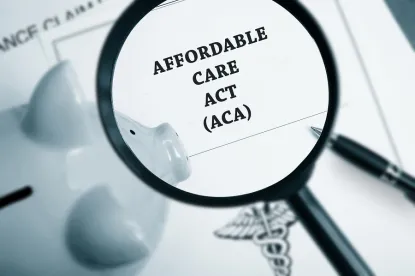On May 13, over six years after the Affordable Care Act (ACA) was passed, the Department of Health and Human Services (HHS) Office of Civil Rights issued its final rule (Nondiscrimination in Health Programs and Activities) on the nondiscrimination prohibitions found in Section 1557 of the ACA (Final Rule).
Section 1557 of the ACA prohibits discrimination against any individual on the grounds of race, color, national origin, sex, age, or disability under
-
“any health program or activity, any part of which is receiving federal financial assistance, including credits, subsidies, or contracts of insurance”;
-
“under any program or activity that is administered by an Executive Agency”; or
-
any entity established under Title I of the ACA.
The effective date of the Final Rule is July 18, 2016, except where changes to insurance or plan benefit designs would be required, in which case it is applicable in the first plan year beginning on or after January 1, 2017.
The Final Rule codifies existing nondiscrimination requirements and sets forth new standards to implement Section 1557. The nature of the discrimination claim asserted (e.g., race, gender, age, or disability) may impact the breadth and/or limits of a viable claim. The Final Rule applies Section 1557 across lines of business and possibly corporate entities for certain covered entities, including health insurance issuers.
Importantly, HHS did not exclude Third Party Administrator (TPA) services for self-insured plans from the Final Rule. When the discrimination is alleged to have occurred in the administration of the self-insured plan, HHS will investigate the TPA directly. When the alleged discrimination is in the benefit design of the self-insured plan, HHS will process the complaint against the employer/plan sponsor and, if they do not have jurisdiction over the employer, refer the investigation to the Equal Employment Opportunity Commission (EEOC).
One important aspect of the Final Rule and its definitions is that TPAs that are a “part of” the controlled group of a health insurance issuer that is otherwise “principally engaged in the provision of health insurance” and receiving federal funds are subject to the Final Rule. HHS recognizes that this will be a burden to insurer-affiliated TPAs in a way that it is not to standalone TPAs.
HHS’s approach in this Final Rule underscores the need for benefit distinctions to be supported by medical evidence. HHS confirmed that scientific or medical reasons can justify distinctions based on the grounds enumerated in Section 1557.
HHS rejected the request from the insurance industry to either harmonize the Section 1557 rules with Centers for Medicare and Medicaid Services (CMS) rules, where applicable, or adopt a “deemed” compliance approach when an entity is found compliant with other regulatory structures.
The Final Rule authorizes private causes of action for violations of Section 1557. HHS stated in the preamble that it plans to enforce Section 1557 using the enforcement mechanisms under Title VI, Title IX, Section 504, or the Age Discrimination Act with respect to recipients of federal financial assistance. The Final Rule also makes clear that this private right of enforcement includes compensatory damages.




 />i
/>i

